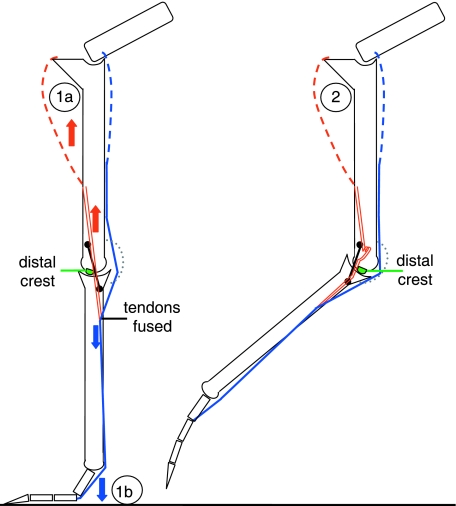Fig. 6.
Schematic of left limb, lateral view. Tendo lateralis of m. fibularis longus (MFL, double red line) interacts with MFB (black line); m. flexor perforatus digiti III (m. flex. III, single blue line) joined to MFL; green spot, distal lateral crest; grey dotted line, Cartilago tibialis. (1a) During extension/stance, the IT extensor m. fibularis longus is highly active. Its tensed tendo lateralis presses the MFB against the lateral joint to further constrain MFB ascent of the distal lateral crest. As a result, EDM joint stabilization is augmented by an extensor muscle in the engaged state. The interplay of MFL/MFB is activated proximally of the IT joint with direction of tension indicated by red arrows. (1b) Ground reaction forces increase tension of the m. flex. III (blue) which fuses with the MFL distal to the IT joint, further increasing pressure on the MFB during stance. Interplay of m. flex III tendon/tendo lateralis during MTPh joint extension provides a load-based component to scale EDM stabilization in response to the tensed toe flexor tendon. This interplay is activated distally of the IT joint with direction of tension indicated by blue arrows. (2) During flexion/swing phase, the m. fibularis longus is relaxed. The tendo lateralis forms a loop and exerts no pressure on the MFB, which easily overcomes the distal lateral crest to achieve the disengaged state.

